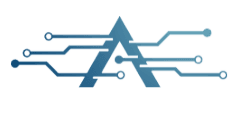The current digital era requires businesses and developers to rely on database management software for handling their data storage activities. Data is life. Choices abound. Every decision can seem critical. Setting up a tool for the task should receive equivalent strategic importance to major project development.

Data management executes through various handling systems. Precise organizing methods enable the filing cabinets within this system to preserve its data. All stored information obtains connectivity through this dynamic social network system. Consider a SQL database. The database shows its information through tables that provide structured layouts similar to those used in ledger books. Information appears together with its matching columns in each row in the database. Multiple information systems contain data storage features that use documents as well as graphical representations and sequences with timestamps.
Distinct versions of SQL relational databases have been serving as the typical database system for many generations. The basic accounting tool that ledger books originally were transformed into stronger systems of management. During professional discussions the database technologies MySQL and PostgreSQL occur frequently. These systems use structured information which responds to specific question requests. Questions are accepted by the system when they are presented in direct inquiry format. They return exact answers. The relational database structure provides developers with an appealing organizational structure. A system functions through distinct purposes of its rows and tables along with keys and indices which are database elements. Foreign keys establish the static data connections which form part of the data structure. Many find comfort in this reliability.
There is a flip side. Any tale that breaks the rules of column restriction would remain impossible to store. Waiters who write complicated stories make it tough to arrange the information with table structures. The main purpose of NoSQL databases takes place in their domain structures. Each model system present in these databases provides developers with flexible options. Table structures cause developers to experience disappointment through the analogy of trying to fit a square peg into a round hole. The database systems possess functionality that enables data modification to match evolving needs.
The document storage model groups all information within independent units. Such database elements serve as small publications which store independent data. MongoDB is a well-known example. Each document in the system has unique fields that might exist in various data structures. The stored information within the database system lacks any rigid predefined format. Information in the database flows through narrative properties instead of adopting structured database record organization. Programmers rely on this methodology to enhance creativity as per developer reports.
The storage logic of Key-Value stores operates similarly to the functionality of operating dictionaries. Every key points to a specific value. These systems can perform fast and speedy operations for quick result retrieval. Visualize rummaging through a cookbook. The variety of recipe names serves as retrieval keys that point to the required ingredient information which performs as values. Redis excels in this format. Its speed rivals that of any sprinter on the track.
The sophisticated structure of graph databases operates through a network design that tracks every connection point the same way a spider web works. They focus on relationships. Things in the data network form different relationships that cannot be predicted. Most social networks adopt graph-based methods when they implement their network structures. This system uses standards to follow both friendship relationships as well as share exchange data. Users obtain system member grouping information through executed queries. The system gives users the ability to find friend-of-a-friend connections by following query threads.
The Time-Series database system shows expertise in dealing with sequential data accumulation. The systems detect adjustments among moisture levels and market valuations and website visitor statistics among other factors. Every stored entry in the databases receives timestamp attribution. Most organizations opt for InfluxDB as their preferred solution when dealing with such requirements. The system functions under joint supervision of engineers alongside analysts during trend examination procedures. These systems use a similar approach as wind vane turning for pattern prediction capabilities.
The object-oriented database serves as another database solution. The system develops interconnections by merging administrative practices of database management with programming operations. According to the object-oriented design principle data can be safely stored by objects in a streamlined process. Due to their data-storage next to programming code these systems are viewed favorably by developers. The database data operates as one coherent group generating one continual sequence.
These database features combine to form unified systems because of multi-model databases. Through multi-model databases various data models function as a unified system in a single operational environment. Users receive single-platform access that combines different database specializations. The database system ArangoDB carries out this database implementation design. Every raffle draw distributes separate tickets based on this model design. This system delivers both adaptable usage and greater practical features to its users.
Different elements of data remain dispersed across all locations within an operational distributed system. If any failure occurs within the system it will proceed to the alternate backup location by default. Cassandra and CockroachDB offer this advantage. During operation the system functions as a relay race where every participant transfers the baton without creating any delays. These systems enable high-demand operations which serve users worldwide. Distributed system design provides operational characteristics that central databases cannot reach easily.
Database performance matters. An information system based on SQL features represents the most suitable solution for particular system needs. NoSQL solutions need to be implemented in specific instances where versatility among different requirements becomes essential. Performance depends on your goals. The frequent need for updated data in mobile apps indicates an appropriate application scenario. A key-value storage structure stands as the suitable system for your needs. For transactional support a banking system chooses databases at the relational stage. Every system has its strengths.
Languages differ across database systems. The database system uses Structured Query Language as its leading choice among SQL standards. The defined structure of the SQL language ensures people understand commands correctly without mistakes. NoSQL systems offer different APIs. The database system lets users process both data structures compliant with JavaScript standards and provides intuitive query interfaces to developers. Your experience in data path selection becomes the determining factor. Software programmers opt for NoSQL because it provides an approachable solution. The SQL architecture delivers both high clarity and robust support that resonates favorably among multiple developers above other methodologies.
Data models have practical implications. The relational database structure represents the best opportunity among data structures for a retail business environment. Tables function as containers which organize items prices together with customer records. The structure of the database auto-organizes itself into an ideal format suitable for tables that use rows and columns. Retail transactions need precise calculations. The established rules inside database systems serve to prevent the occurrence of errors. The document store provides choice for blogging platforms instead of working with relational platforms. Every article is a document. The database system arranges comments and images as well as tags through nested element structures. A system enables fast adjustments through few operational limits.







